Hildreth Meière Documentary Series - Watch Trailer
Hildreth Meière Documentary Series - Watch Trailer
Commissioned by: Bertram Goodhue AssociatesIconographer: Hartley Burr AlexanderArtistic Collaborator: Hartley Burr AlexanderMedium: glazed ceramic tileExecuted by: R. Guastavino
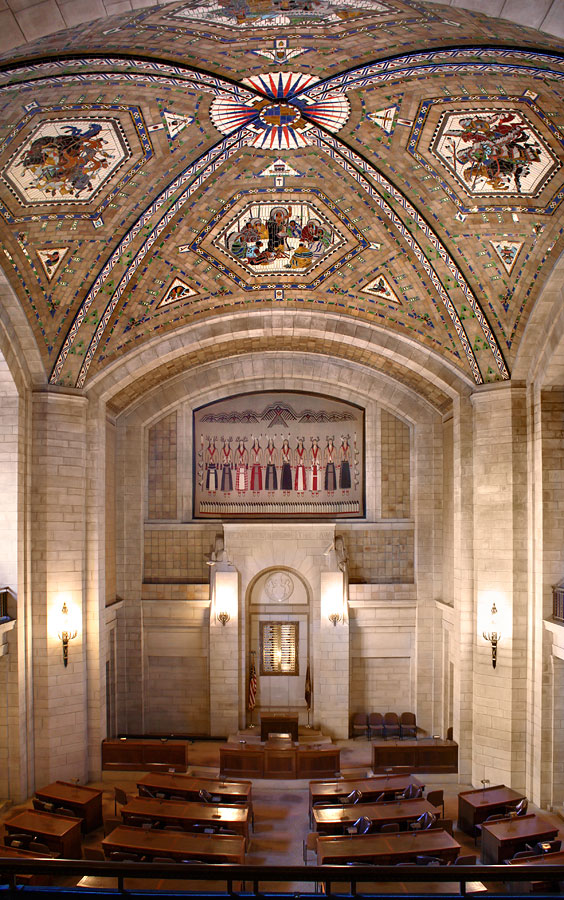
Senate Chamber (Warren Chamber) ceiling
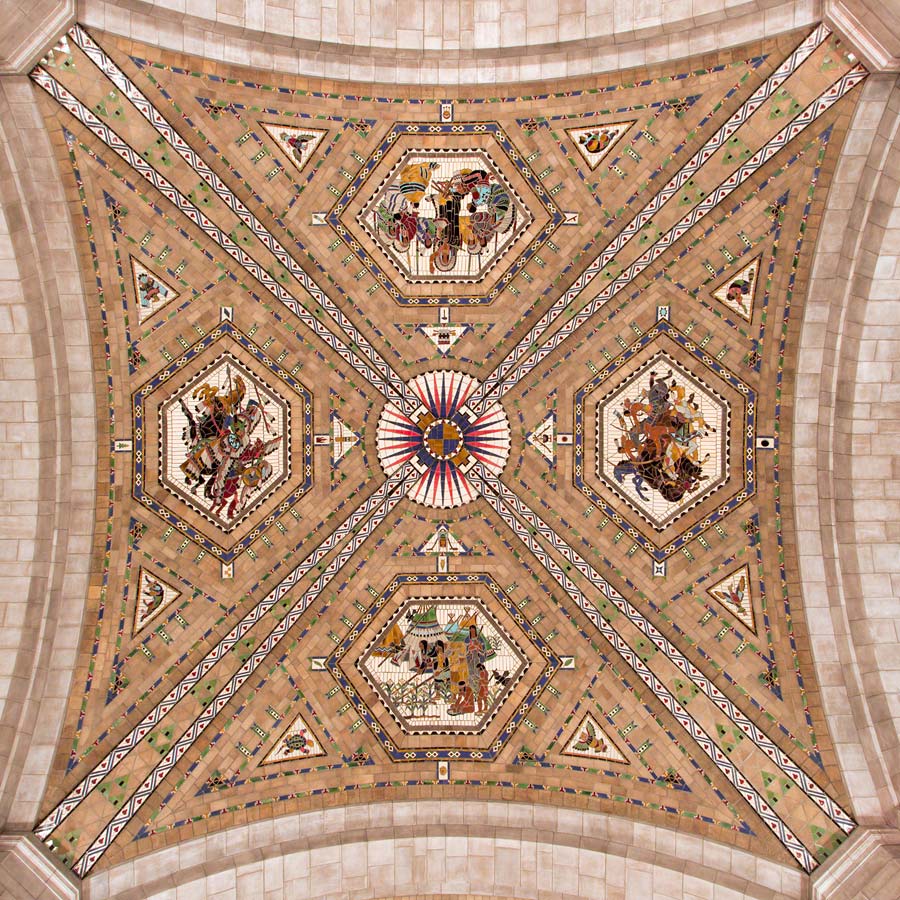
Ornamental sun-disc surrounded by four panels with Native American Life on the Plains
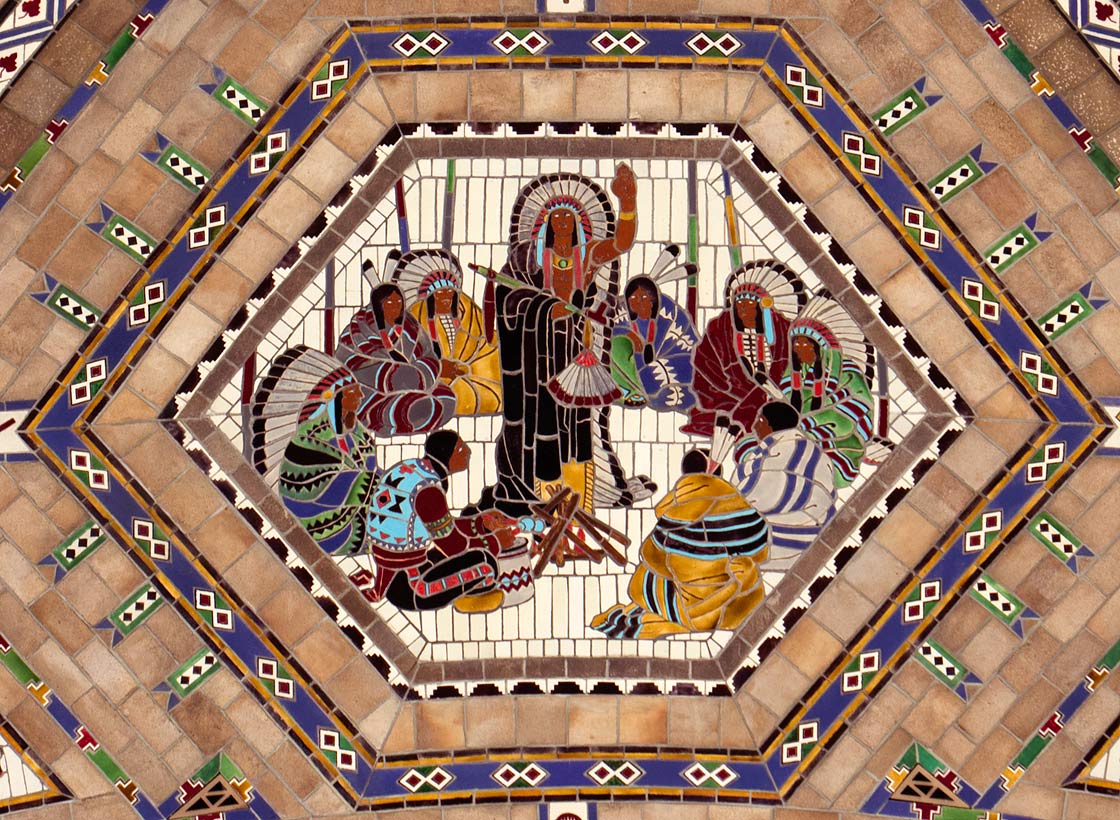
Peace Council
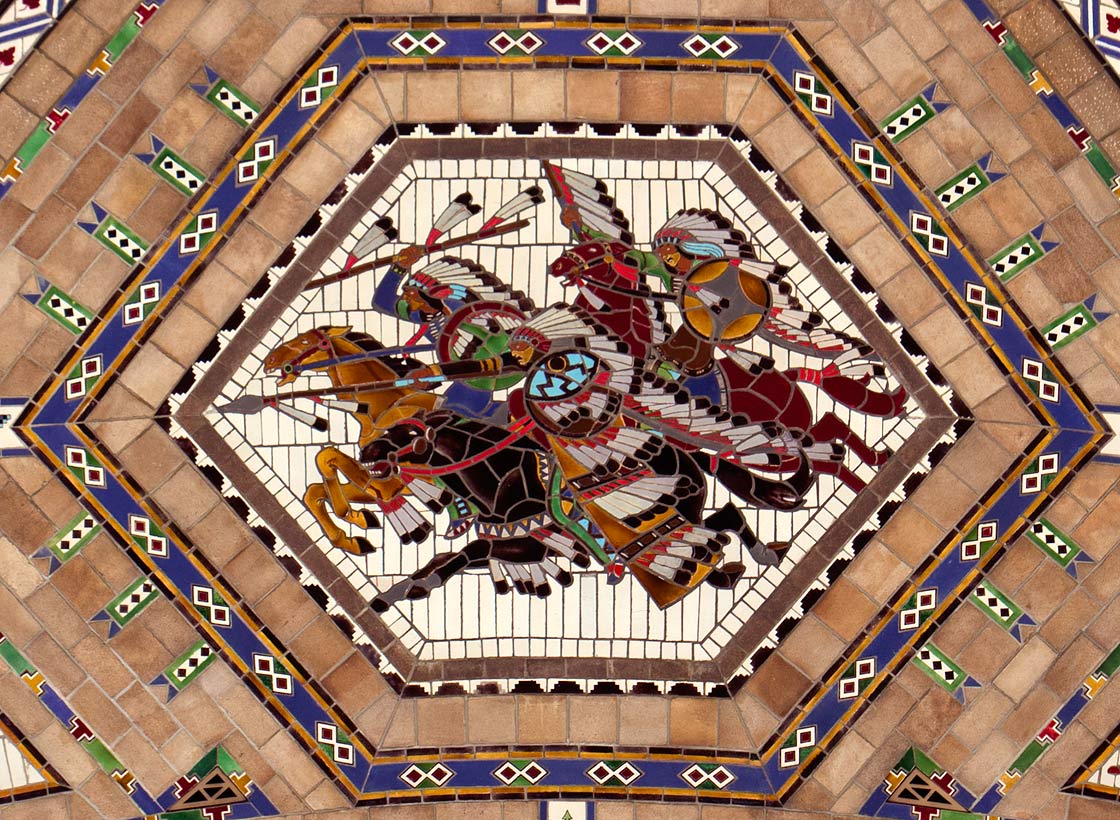
War Party
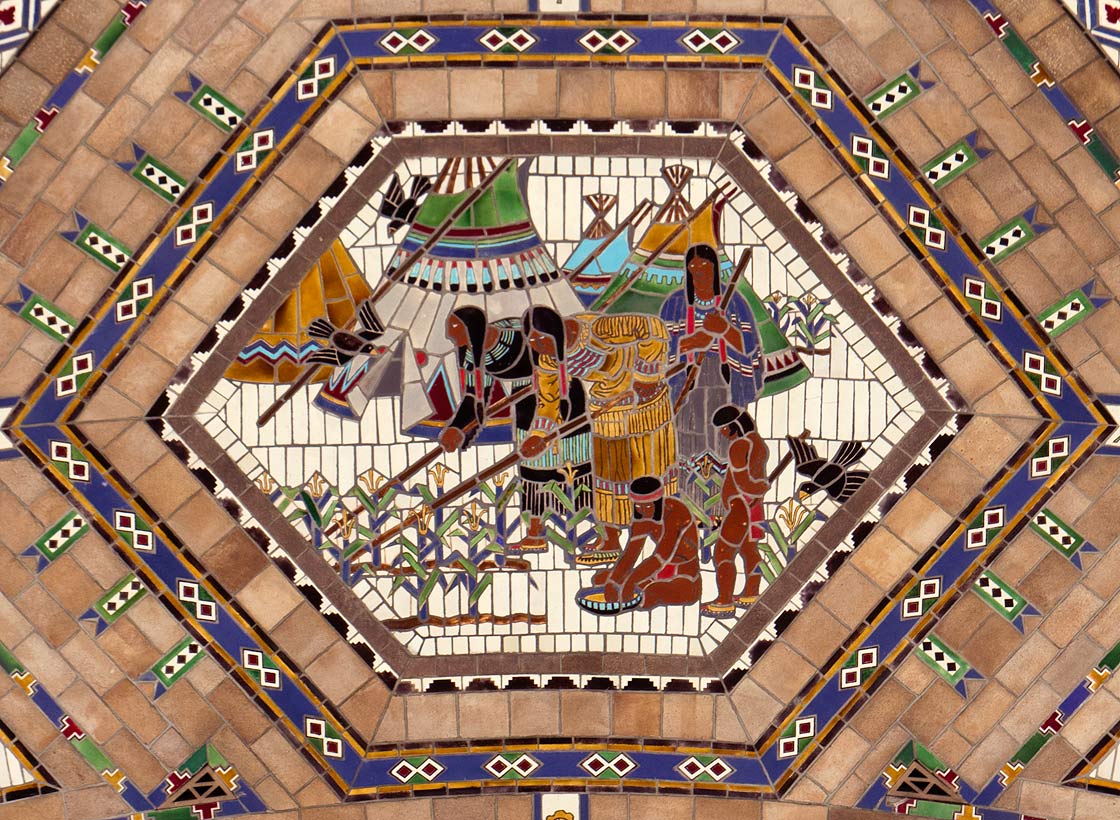
Women Hoeing Corn
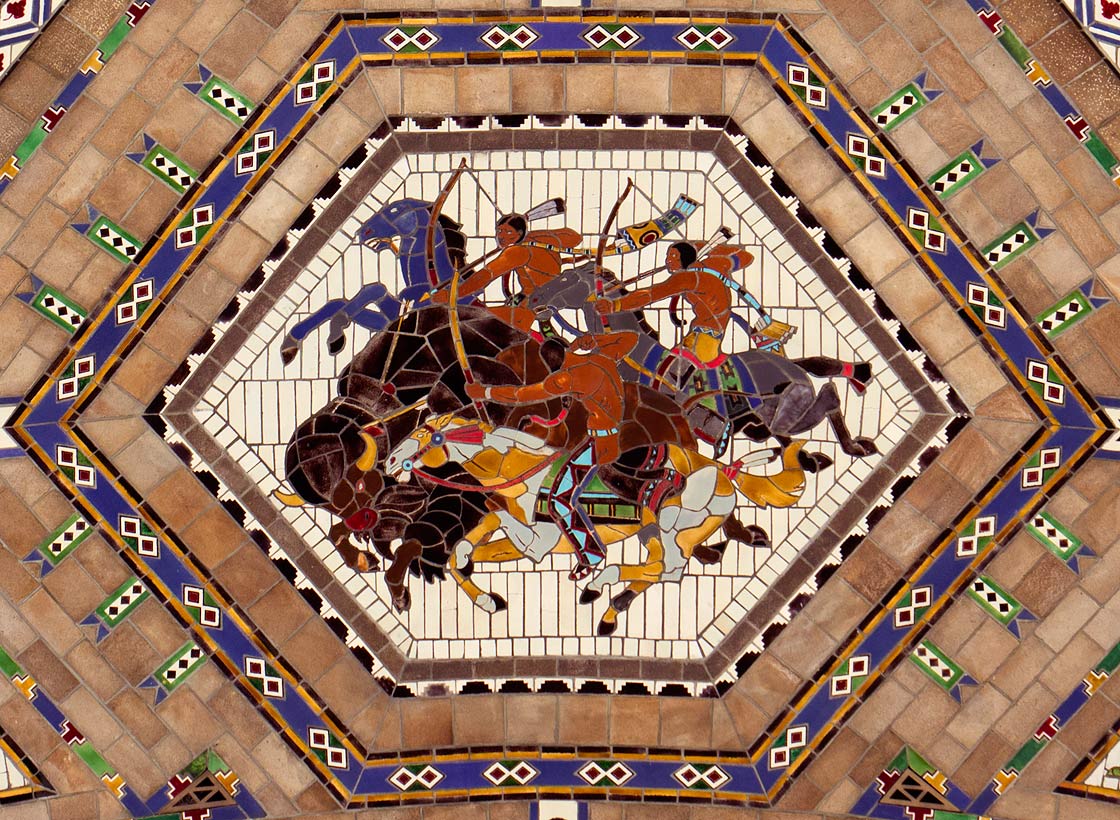
Buffalo Hunt
On the ceiling of the Senate Chamber, Hildreth Meière depicted Native American Life on the Plains in four large panels: Buffalo Hunt, War Party, Women Hoeing Corn, and Peace Council. Hartley Burr Alexander created the iconography to contrast with the Age of Settlement planned for the ceiling in the House of Representatives.
Alexander asked Meière to decorate the Senate ceiling from a Native American perspective. As Meière explained:
I think Dr. Alexander and I both feel a special affection for the Indian ceiling of the Senate Chamber. Being an authority , as he is, on Indian art and life, he was particularly anxious that this commemoration of the first inhabitants of the state should be adequately handled. He lent me many photographs of Indian beadwork, blankets, etc., as well as examples of their art. I based my style as nearly as I honestly could, on theirs, and as far as we know, this ceiling is the first important attempt to portray Indian subjects as the Indians themselves would do. . . . The colors, the ornament, the very shapes of the panels themselves in this ceiling are Indian, and the flavor of the whole is undoubtedly authentic. For this reason, I think it is the best thing that I have done.1
In the center of the ceiling is a Native American ornamental sun-disc. Alexander insisted on four rather than three main ceiling panels, explaining that “Indian symbolism always moves in fours,” and sent Meière prints of Siouan beadwork, quillwork, and paintings as examples to follow.2 Alexander critiqued Meière’s studies for each panel until he was satisfied with the result. In response to her early studies for Peace Council, he wrote:
None of these [studies] seem to be Indian in attitude or feeling. They are lacking in sternness, I think. . . . I believe you should have Indian character & Peace at the same time—but that means the maker of peace. When the face is raised you get the appeal to the Great Spirit idea, but when the eyes are straightforward, you have the offer of peace on the part of one who can give either peace or war. . . the Peace Pipe [should be] laid across the left arm, over which falls a fold of the blanket, while the right arm is raised with hand palm out (making the Indian peace sign). I should have the Counselor facing forward, but turned a little toward the charging warriors, as if offering peace.3
Meière reworked her design for Peace Council until she received Alexander’s approval.
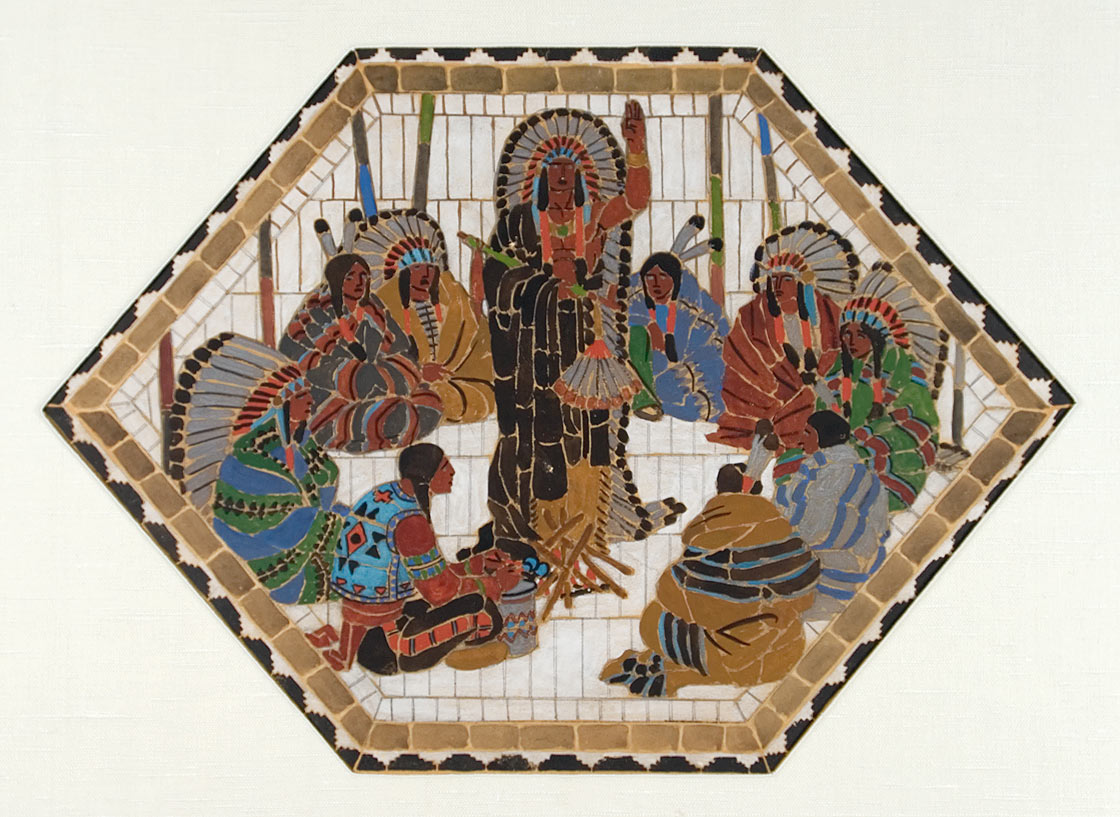
Peace Council, study in gouache on cartoon paper
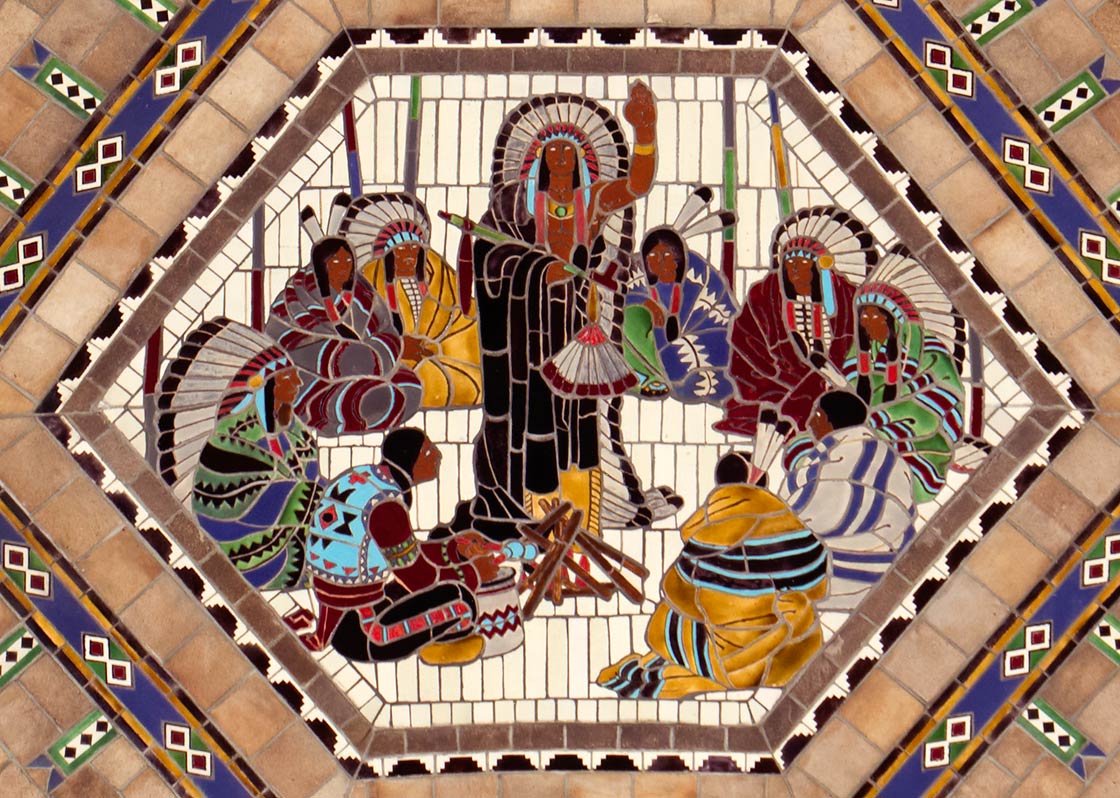
Peace Council in glazed ceramic tile
As architect and editor Charles Downing Lay pointed out at the time,
Although Miss Meière has had to satisfy the exacting requirements of Dr. H. B. Alexander, philosopher and Indian ethnologist of high attainment, she has nowhere sacrificed her own interest in the artistic quality of her work...The designs are naturalistic, with a literary or story-telling aspect, yet they have the qualities of vital and moving art.4
R. Guastavino executed Meière’s hexagonal panels in glazed ceramic tile surrounded by rows of structural, beige acoustic tile to preserve the acoustic qualities of the Senate Chamber. Meière herself had the idea of using a white tile background for the panels as a means of suggesting Sioux beadwork in the tile itself.5 Beadwork also influenced Meière’s patterns along the edges of the panels. In fact, Meière liked the Sioux beadwork and quillwork patterns so much that she incorporated them into her designs for other commissions including the University of Chicago, Rockefeller Chapel, and Temple Emanu-El and the AT&T Long Distance Building in New York.
Hildreth Meière, letter to Mrs. Shellenberger, September 9, 1930, Hartley Burr Alexander Papers, Ella Strong Denison Library, Scripps College, Claremont, California (HBA Papers).
Alexander, letter to Meière, April 24, 1926,HBA Papers. See Catherine Coleman Brawer, Walls Speak: The Narrative Art of Hildreth Meière (St. Bonaventure, N.Y.: St. Bonaventure University, 2009): 32-37. See also Brawer and Kathleen Murphy Skolnik, The Art Deco Murals of Hildreth Meière (New York: Andrea Monfried Editions, 2014): 72-79.
Alexander, letter to Meière, August 8, 1926, HBA Papers.
Charles Downing Lay, “Hildreth Meière,” The Arts 14 (July/December, 1928): 106.
Alexander, letter to Meière, April 24, 1926, HBA Papers.